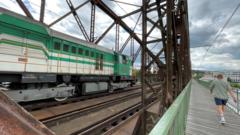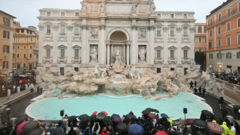The Vysehrad railway bridge, a significant historical structure in Prague, may soon be torn down, prompting fierce discussions within the community. Prague, famed for its architectural beauty and rich history, is home to this 123-year-old landmark, erected during the Austro-Hungarian Empire. Architect and bridge engineer, Petr Tej, passionately argues for its preservation, considering the bridge a key component of the city's iconic landscape alongside the Vysehrad fortress. Standing next to this aging structure, the deterioration of its metalwork becomes apparent, with reports indicating that only 15% of the steel requires replacement, contrary to previous claims by the Railway Authority.
The Vysehrad Bridge Foundation, an international consortium dedicated to restoring similar steel bridges, contends that the proposal to replace the bridge is unwarranted. Supported by over 25,000 signatures from residents advocating for restoration, their findings received backing from UNESCO, emphasizing the bridge's historical importance. However, Pavel Paidar from the Railway Authority argues that the bridge's current condition limits its capacity to handle growing rail traffic—with corrosion undermining its structural integrity. The proposed new bridge aims to accommodate a third track and improve transport links while maintaining some aesthetic resemblance to the original.
Critics of the planned relocation of the old bridge to Modrany express concerns about its appropriateness in a rural setting, while advocates argue that it's possible to enhance transportation infrastructure without sacrificing heritage. The ongoing debate underscores the broader conflict between modernization and historical preservation, a dialogue pivotal to the identity of a city that values its architectural legacy. As these discussions unfold, key decisions will soon land in the hands of the Czech government, determining the fate of this beloved structure.





















